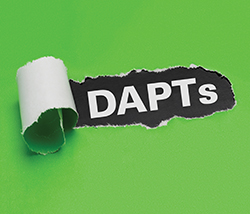
our assets face many potential threats to their value, such as market volatility and inflation. Another threat, especially if you’re at high risk for lawsuits, is creditors. The most effective way to protect assets from such a threat may be to transfer them to children or other family members, either outright or in trust, with no strings attached. So long as the transfer isn’t fraudulent — that is, intended to delay or defraud known creditors — creditors won’t be able to touch the assets.
If you wish to retain some control over your wealth, however, consider an asset protection trust. For affluent families with significant liability concerns, foreign asset protection trusts probably offer the greatest protection. But if you prefer to avoid the complexity and expense of these arrangements, look into a domestic asset protection trust (DAPT).
How does it work?
A DAPT is an irrevocable, spendthrift trust established in one of the 16 states that currently authorize this trust type (Alaska, Colorado, Delaware, Hawaii, Mississippi, Missouri, Nevada, New Hampshire, Ohio, Oklahoma, Rhode Island, South Dakota, Tennessee, Utah, Virginia and Wyoming). Unlike trusts in other jurisdictions, a DAPT offers creditor protection even if you’re a discretionary beneficiary of the trust.
You don’t necessarily have to live in one of the previously listed states. But, to set up a trust in a state where you don’t reside, you’ll typically need to move some or all of the trust assets there and engage a bank or trust company in the state to administer the trust.
DAPT protection varies from state to state, so it’s important to shop around. For example, different jurisdictions have different statute of limitations periods, which determine how long you’ll have to wait until full asset protection kicks in. (During the limitations period, creditors can challenge transfers to the trust.) Also, most of the DAPT laws contain exceptions for certain types of creditors, such as divorcing spouses, child support creditors and pre-existing tort creditors.
Usually, DAPTs are incomplete gift trusts, which give you some flexibility to change beneficiaries or otherwise control asset disposition. But it’s also possible to structure a DAPT as a completed gift trust, thereby removing the assets (and any future appreciation of those assets) from your taxable estate.
What’s the primary risk?
A DAPT’s main disadvantage is the uncertainty over whether it will withstand a court challenge. Although they’ve been around since 1997, DAPTs haven’t been widely tested in court.
Most experts agree that, if you live in one of the states with a DAPT statute, a properly designed and funded DAPT will likely be effective. But some uncertainty surrounds trusts established by nonresidents.
Is it the right move?
There are other ways to protect your assets from creditors, such as through insurance or use of various business entity structures. We can help you decide whether a DAPT is the right move.